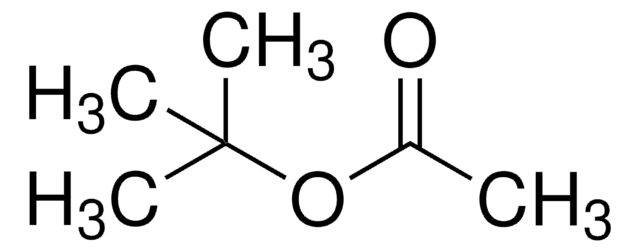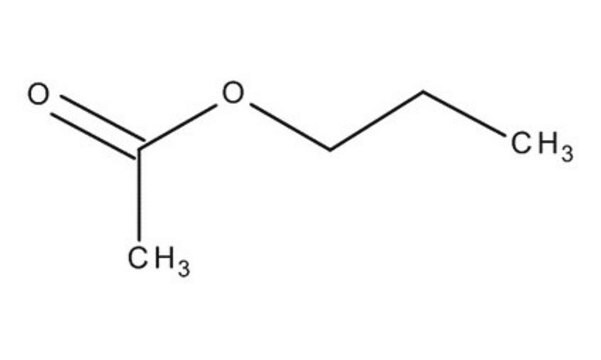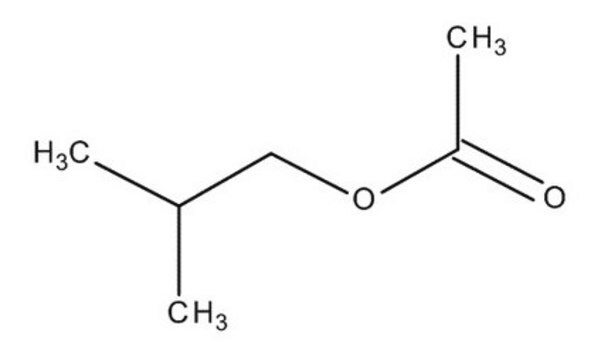About This Item
8 mmHg ( 20 °C)
Recommended Products
grade
ACS reagent
Quality Level
vapor density
4 (vs air)
vapor pressure
15 mmHg ( 25 °C)
8 mmHg ( 20 °C)
Assay
≥99.5%
form
liquid
autoignition temp.
790 °F
expl. lim.
7.6 %
technique(s)
tissue processing: suitable
impurities
H2SO4, passes test (darkened)
≤0.0016 meq/g Titr. acid
≤0.1% water
≤0.2% C4H9OH
evapn. residue
≤0.001%
color
APHA: ≤10
refractive index
n20/D 1.394 (lit.)
pH
6.2 (20 °C, 5.3 g/L)
bp
124-126 °C (lit.)
mp
−78 °C (lit.)
density
0.88 g/mL at 25 °C (lit.)
SMILES string
CCCCOC(C)=O
InChI
1S/C6H12O2/c1-3-4-5-8-6(2)7/h3-5H2,1-2H3
InChI key
DKPFZGUDAPQIHT-UHFFFAOYSA-N
Looking for similar products? Visit Product Comparison Guide
Related Categories
General description
Application
Signal Word
Warning
Hazard Statements
Precautionary Statements
Hazard Classifications
Flam. Liq. 3 - STOT SE 3
Target Organs
Central nervous system
Supplementary Hazards
Storage Class Code
3 - Flammable liquids
WGK
WGK 1
Flash Point(F)
80.6 °F - closed cup
Flash Point(C)
27 °C - closed cup
Choose from one of the most recent versions:
Already Own This Product?
Find documentation for the products that you have recently purchased in the Document Library.
Customers Also Viewed
Our team of scientists has experience in all areas of research including Life Science, Material Science, Chemical Synthesis, Chromatography, Analytical and many others.
Contact Technical Service







